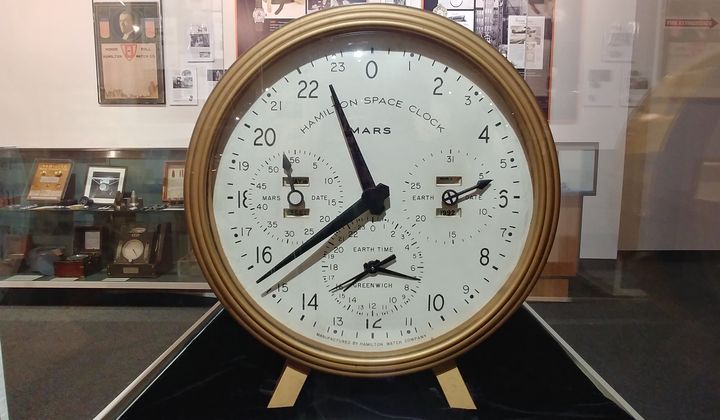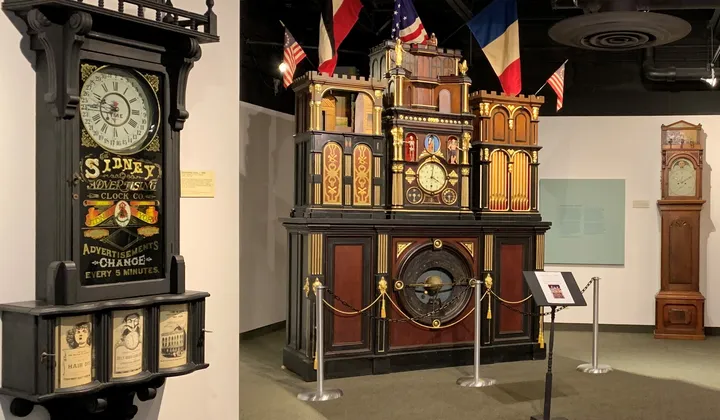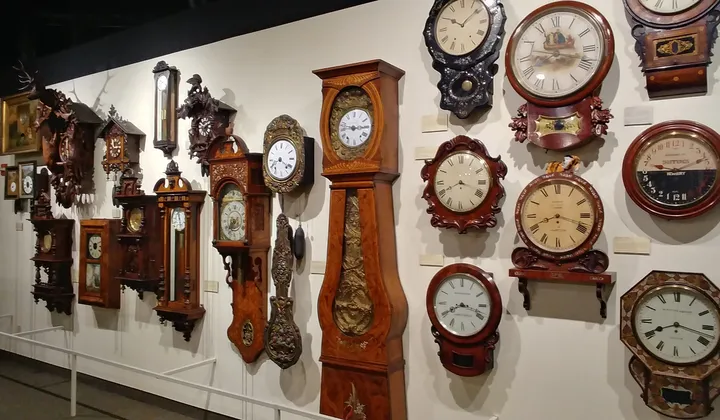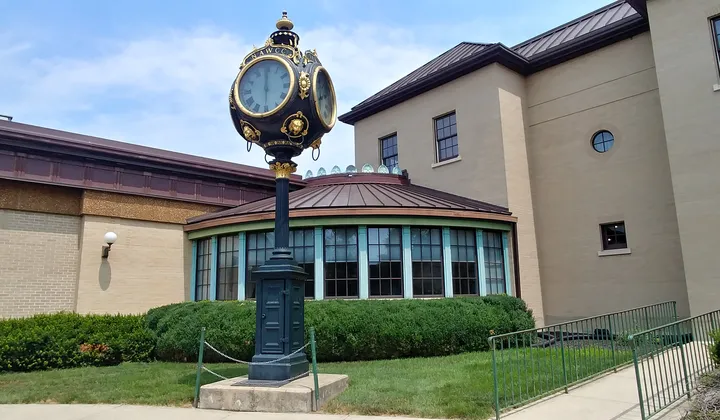National Watch & Clock Museum
514 Poplar Street, Columbia, PA 17512 - United States
Operated by the National Association of Watch & Clock Collectors, the National Watch & Clock Museum features the largest collection of timepieces in North America – more than 13,000 from around the world, including a German table clock from about 1570. Visiting the NAWCC Museum is the closest you can come to time travel. From prehistory to the space age, the items on display delight visitors of all ages. While visiting the museum, you will enjoy the sights and sounds of watches and clocks from around the world, be inspired by the artistry and science of timepieces, and marvel at the inner workings of timekeepers of all shapes and sizes.
Exhibits
A visit to the Museum would not be complete without seeing and hearing the Engle monumental clock and the Welte orchestrion. The Engle clock, which was completed in 1877, weighs 1,049 pounds and has a height of 11 feet, a width of eight feet, and a depth of three feet. It features music, moving carved figures, and reminders that time is fleeting. It is run every day at noon and 2:00 PM. You can hear the Welte orchestrion between these shows at 11 AM, 1 PM, and 3 PM. The orchestrion mechanically plays music with actual organ pipes, drums, and a triangle.
Visitors also enjoy seeing the Goolsby Collection of Thomas Ives and Salem Bridge Clocks. Ives is one of America’s most celebrated clockmakers, and he is well known for his innovative construction features. The Goolsby collection is noteworthy for its breadth and scope. There are examples of Ives’s earliest work, which included his tall clocks produced circa 1810. Examples of most of his known early experimental clocks are also represented, and a few of these can only be found in this collection and nowhere else. Salem Bridge shelf clocks were produced in the Connecticut Naugatuck River Valley during 1817–45. This grouping constitutes the largest single collection of Salem Bridge clocks available for public display. Among the clocks in this group is a Bishop and Bradley clock with a stunning reverse-painted glass commemorating Lafayette’s visit to the United States in 1825 that is considered by many to be the finest example of Salem Bridge clockmaking.
Participation in Museum Day is open to any tax-exempt or governmental museum or cultural venue on a voluntary basis. Smithsonian magazine encourages museum visitation, but is not responsible for and does not endorse the content of the participating museums and cultural venues, and does not subsidize museums that participate.






